Antibody Therapeutics
e-Xchange
(a virtual meeting)
Target Selection
- Functional assays are critical for lead candidate selection, but are often delayed to secondary and tertiary screening. What are the best ways to implement them in the primary screening process?
- Multiple approaches exist for solubilizing and displaying membrane proteins (liposomes, VLPs, etc) – which ones are generally useful for screening purposes?
- What are the best strategies for improving the sensitivity of fluorescence-based functional assays in nanowell/picowell formats?
Group Leader, Therapeutic Antibody Discovery
Novartis
John got his Ph.D. from the Scripps Research Institute in 2003. Since then, John’s research has focused on using display technologies, immune approaches and an array of protein engineering approaches for antibody discovery and bi and multispecific antibody engineering at multiple companies – Genentech, Trubion, Emergent BioSolutions, and Novartis. John leads antibody discovery at NIBR in Cambridge, where they use a mix of display and immunization approaches coupled with high throughput screening to find and optimize antibodies for a variety of therapeutic modalities and indications.

- How to overcome the challenges of measuring and quantifying the specific antibody response in your animal or human model?
- What strategies can be implemented to leverage the over-expressed antibodies the animal or human produces naturally as a therapeutic or biomarker?
- How to overcome issues of downstream optimization sooner?
Director, Business Development
Rapid Novor
Anthony has been heading the business development at Rapid Novor for nearly 4 years, merging his previous 8 years of experience in the business roles with a strong passion for biomedical research, stemming from his training in biomedical engineering. His current efforts are focused on the growth of the REpAb™and NovorIg™ platforms with pharmaceutical and biotech companies globally. His partnerships are focused on using REpAb in patients or animal models to sequence monoclonal antibodies from polyclonal sera, as well as immune system profiling using NovorIg, the team’s NGS based analysis to monitor the relative quantity of specific antibodies over time. Anthony’s a maker and in his spare time takes advantage of the Toronto HackLab to do biological research and other engineering projects.

1:35pm – 2:35pm
- What are the key criteria for selecting an antigen target? What considerations should be taken into account for cancer-associated antigens?
- What are the pros and cons of targeting over-expressed self-antigens, cancer germline antigens, and neoantigens?
- What antibody parameters should be considered when selecting an antigen target? Antibody affinity? Epitope? Internalization rate? Other?
- How does therapeutic modality influence target selection? (i.e. ADC, CAR-T, T-cell engager, conventional mAb)
Senior Director, External Innovation
Johnson & Johnson
Gadi Bornstein has twenty years of experience in Oncology R&D with an emphasis in preclinical antibody discovery and development. In his current role, Gadi has strategic responsibility for scouting and evaluation of external opportunities for collaboration or investment across all biologic drug modalities.
Prior to joining Johnson & Johnson, he led and directed biologics discovery efforts at TESARO, a GSK company. He received his B.S. in biochemistry at the University of California, Davis and his doctoral degree in biochemistry at the University of Southern California Keck School of Medicine. Gadi completed his postdoctoral training at Stanford University in the Division of Immunology and Rheumatology.
Following his postdoctoral training, Gadi joined Amgen Fremont, Inc. (formerly Abgenix, Inc.) as a Staff Scientist in the Preclinical Oncology department. He has held roles of increasing responsibility at AstraZeneca, Pfizer, and Novartis, where he was a project team leader and key contributor to scientific strategies for multiple oncology programs. Gadi has authored numerous research papers, reviews, as well as book chapters, and is a co-inventor on multiple patents.
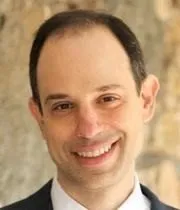
Lead Identification
- Can one platform fit all purposes? Pros and cons of different technologies: In vivo vs in vitro technologies, bioinformatics; Is there synergy between different technologies?
- Resource of libraries: synthetic, semisynthetic, naïve, infected human/immunized animals;
- Speed, diversity, quality including specificity, affinity, and scalability (stability, solubility), easy manipulation?
- Can we dig out rare clone with function especially for challenging Ags?
Vice President, Antibody Discovery
LinkedUp Bioscience
Tao Wang is the Cofounder and Vice President of Antibody Discovery of LinkedUp Bioscience, a startup employing both in vivo and in vitro platforms to develop innovative antibody therapeutics, to address high unmet medical needs of various diseases. She is leading the efforts to set up the company’s antibody discovery engines including AbLink, OptAb, VHH abs and LinkBodies. She has more than 15 years of experience in biologics, antibody discovery, antibody engineering and analytics from her various positions at Abbott, Dartmouth medical school, Adimab, Biogen and Merck after finishing her graduate school at UMASS–Amherst.

- What is physiologically relevant data?
- How do you measure binding in complex matrices?
- How does temperature affect binding?
- Does purifying your samples affect binding?
Senior Scientist
Sapidyne Instruments
Thomas Glass is a co-founder of Sapidyne Instruments Inc. where his present position is Senior Scientist. He is a co-inventor of the KinExA technology which underlies their successful line of KinExA instruments used in characterizing the binding constants of reversible interactions including receptor-ligand, antibody-antigen etc. His undergraduate training is in Physics and his interest in measurements and instrumentation lead him through a Masters degree in Optics and a PhD thesis centered on environmental immunoassay. He actively supports development of new and improved binding measurement techniques centered on KinExA’s core interest of accurate binding constant measurement.
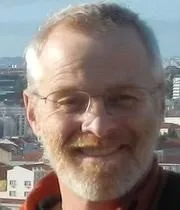
1:00pm – 1:30pm
High throughput single-cell screening has enabled the rapid generation of large, diverse antibody sequence datasets. By combining immune repertoire sequencing with functionally validated single-cell data, we further expand the landscape of antibody diversity accessible for lead identification. CeliumTM, AbCellera’s interactive software, interprets these complex datasets using dynamic visual networks to guide the selection of antibody drug candidates. This unparalleled ability to both generate and visualize highly curated large datasets dramatically expands the pool of potential therapeutic candidates.
- What is the best approach to quickly discover lead nanobodies from immunized IIama? phage display or single B cell?
- Do we need single B cell technology in this setting?
- Single B cell technologies vs NGS technology for VHH discovery
President & Chief Executive Officer
Abimmune Biotherapeutics
Zhinan Xia received his Ph.D. degree in Biochemistry and Molecular Biology from the University of Kentucky and got his postdoc training at Harvard Medical School in molecular immunology/oncology. He is the first scientist expressed active form of human granzyme B. Dr. Xia was Staff Scientist/Instructor at Dana-Farber Cancer Institute for 4 years, and moved to biopharma industry, as a principal scientist first at Wyeth then Pfizer, focusing on antibody discovery and human coagulation factor bioengineering. He has played a critical role in the development of orphan drug Kanuma (FDA designated breakthrough therapy and product approval in 2015) when he worked at Synageva as the Director of Protein Engineering. He authored more 35 peer-reviewed articles, 10 US and international patents, and two-chapter books. He held multiple guest professor appointments with several prestigious universities in Nanjing and Shanghai.
Zhinan is currently the founder and CEO of AbImmune Biotherapeutics (A new startup in Kendall sq Cambridge) after a multi-year tenure as the Head of Biotherapeutics of Moderna. His new venture will be at the forefront of fighting cancer by immobilizing the human immune system through novel target discovery and new biology enabling bispecific antibody design and engineering.
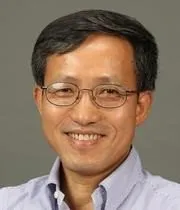
- How important is affinity?
- Should developability assays be completed before hits are identified?
- Is sequence and epitope diversity important?
- Does choosing too many hits for the hit-to-lead phase result in extending timelines and increasing costs?
Chief Scientidic Officer
Invetx
William is the CSO of Invetx which is focused on developing biologics for the animal health field. Prior to his current role, he was a Senior Vice President at Ohana Biosciences where he directed efforts to develop a novel biologic for a male contraceptive. William spent the majority of his scientific career at Genzyme and Sanofi where he oversaw biologics research. In addition, he held senior roles for the Lemtrada preclinical team and Genzyme’s antibody-drug-conjugate program. Earlier in his career he headed a second generation FSH project at Serono, which eventually was successful in phase II clinical trials. He received his PhD in Oncology from the University of Wisconsin-Madison.

4:50pm – 5:20pm
Antibody Optimization
- Are there examples when higher affinity is not better?
- Are there “rules” that enable us to predict optimal affinity instead of determining it empirically?
- Do certain antibody discovery technologies reduce the chance of obtaining mAbs with sequence and/or immunogenicity liabilities?
- Do certain liabilities threaten to give artifacts in preclinical pharmacology that might impact your choice of lead mAb (i.e. the risk that correcting the liability would impact the pharmacology)?
Executive Director, Head of Biology
Mersana Therapeutics
Marc Damelin is Executive Director and Head of Biology at Mersana Therapeutics, where is he focused on ADC discovery and development for oncology. Prior, he spent 10 years at Pfizer, where he led ADC project teams, oversaw the ADC portfolio and mentored two postdoctoral fellows. He is the Editor of “Innovations for Next-Generation ADCs,” a volume to be published by Springer in 2018. Marc received his Ph.D. in Biophysics from Harvard University and was a Postdoctoral Fellow of the Damon Runyon Cancer Research Foundation at Columbia University.

- How to optimize antibody sequence without introducing unnatural mutations?
- How to thoroughly explore natural antibody sequence space around your lead?
- Humanizing and optimizing your lead at the same time – pitfalls?
- How do you exclude potential developability dipeptide motifs from your library?
Chief Scentific Officer, Biopharma
Twist Biopharma, a division of Twist Bioscience
Aaron is Chief Scientific Officer of the Biopharma Vertical at Twist Bioscience. Prior to Twist, he served as Chief Scientific Officer of LakePharma, leading the California Antibody Center, which discovers novel antibody therapeutics for its clients. He also oversaw all discovery research functions both as Vice President of Protein Sciences at Surrozen, and previously, as Vice President of Research at Sutro Biopharma, Inc. He also held director level positions at both Oncomed and Dyax Corp.
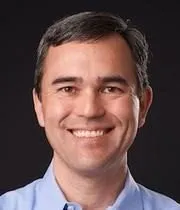
1:30pm – 2:00pm
New mAbs or agents with other structures have revolutionized treatment options for several diseases and malignancies in the past few years, and more are currently being evaluated in the clinic. The development of new therapeutics comes with a series of challenges and questions, of which one is the risk for unwanted immunogenicity which can lead to decreased efficacy and safety concerns.
Today, both in silico and in vitro preclinical tools are available to identify early on therapeutic candidates with a high immunogenicity risk potential. Additionally, certain tools can be used to mitigate the immunogenicity potential, and thus improve and accelerate therapeutic drug development and reduce the number of clinical failures.
- Late stage development challenges – opportunities for risk mitigation at discovery
- Developability prediction – in-silico vs high-throughput analytics
- Function (efficacy) and chemical stability vs developability
- Advances in route of administration
- Molecular engineering and associated immunogenicity risk
Senior Director, Head, Advanced Analytical Technologies
Takeda
Muthu Meiyappan has over 20 years of experience in Biologic therapeutics discovery and early development. Structural Biologist by training, he received his Ph.D degree from Indian Institute of Science in India and post-doctoral training at Cornell and Harvard Universities in USA, before joining Shire, now part of Takeda. At Shire/Takeda, he held various leadership roles with increased responsibilities in Research, lead molecular selection and early development of biologic drug candidates, through screening and biophysical approaches. Muthu, a two times CEO award winner at Shire, is currently heading Advanced Analytical Technologies function in Pharmaceutical Sciences-Analytical Development department at Takeda.

- What are the challenges and effective solutions in protein production and analytics to address sample heterogeneity in multispecific formats?
- What are other common developability challenges faced in highly engineered multispecific antibody formats?
- What role does big data analytics play in risk assessment, engineering and developability prediction?
Senior Scientist, Protein Engineering
Sanofi
Sagar Kathuria graduated from the University of Massachusetts, with a PhD in Biomedical Sciences, following which he worked as an instructor in the department of Biochemistry and Molecular Pharmacology. His research at UMass focused on using biophysical tools to understand the free energy landscapes of model systems at the very earliest decision points during protein folding. Many of these tools were developed and built-to-purpose, giving the background he needed for my current position. In 2017, Sagar started working on strategies for developability assessment of biologics in early stage research in the Sanofi pipeline. His current focus is on tackling the unique challenges in the developability assessment of multispecific antibodies.

4:40pm – 5:20pm
Alternative Formats
- A “zoo” of formats falling into a few groups
- Rationale for many designs: Biological CMC, regulatory and IP considerations
- The challenges, risks and mitigation
- Lessons learned
- Future trajectory
Senior Director, Protein Engineering
Janssen
Partha Chowdhury is Senior Director of Protein Engineering at Janssen. Prior to this he was Senior Director Biologics Research in Sanofi and Head of the Antibody Discovery group in the US hub. He has been involved with different aspects of therapeutic antibody discovery, engineering, technology development including bi-specific design and translation of molecules into the clinic for more than 20 years. Focusing on a variety of platforms, Partha and his group have addressed and published on some of the key problems of antibody drug development technologies and in engineering them for greater translational success. Prior to Sanofi, Partha had held various positions within MedImmune, Human Genome Sciences and The NIH.

- Why immunogenicity can be assessed early on? When is it considered as a risk?
- How can immunogenicity be assessed?
- What are the strengths and weaknesses of the different approaches (in silico versus in vitro)? Which types of assays have been the most reliable?
- What are some common challenges and how can they be overcome? How do these data correlate to the clinical outcome?
- What are the regulatory bodies advising and how do they interpret the data?
Customer Solutions Manager
ImmunXperts
Amin holds a Bachelor of Science degree in Biology from McGill University, a Graduate Diploma in Biotechnology & Genomics, and a Master of Science degree in Cell & Molecular Biology both from Concordia University.
Early in his career, Amin worked on the cell cycle genetics of the fungal pathogen Candida albicans, characterizing the role a protein plays in modulating response to the environment. His passion for entrepreneurship led him to a business development role in the personalized medicine field before joining the contract research industry to help bring safe and effective medical innovations to patients.

1:35pm – 2:35pm
- Current popular bispecific antibody formats(KIH, DVD, Crossover, common light chain etc.)
- What’s the best format for the bispecific therapeutic antibody development
- Are the trimers or multimers antibody good to explore?
- What’s the most challenge part of develop Bispecific antibody
- Fc based bispecific antibody comparing with scFv/single domain bispecific antibody
Chief Scientific Officer, R&D
NBRLBoston
James Li obtained his Ph.D. in molecular immunology in Medical School of Kyushu University at Japan; finished the postdoctoral fellow at the University of Pennsylvania. He has more than twenty-five years of Bio-pharma industry experiences for the therapeutic monoclonal antibody, bispecific antibody, Fc based fusion protein drug, and anti-tumor cell based immunotherapy development. James worked from a bench scientist, senior scientist, and principal scientist to department head and Executive Director in large, medium and small sized biopharmaceutical companies, such as, Pfizer, Eisai/Morphotek, Takeda/Millennium Pharmaceuticals, AcceleronPharma and QLB Biotherapeutics. He has participated and led antibody therapeutic candidates have been moving to preclinical, clinical phase I, phase II and phase III. As a major investigator, several antibody drugs patents obtained, and dozens of scientific papers and book chapter have been published in PNAS, J Immunol, Cancer Res, and Making and Using Antibody/ CRC press book.
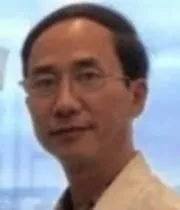
- What are the main functional modifications expected from Fc engineering?
- Why Fc engineering for FcR binding is underexploited?
- How Fc mutants’ efficiency, functional modifications are measured?
- How we use engineered mice and what are the limits?
- What the pre-clinical and clinical studies teach us about Fc engineered biologics?
Senior Scientist, Head Fc Biology Group
Abbvie
Joel earned his PhD in Herve Fridman’s Lab at the Curie Institute (Paris FR) studying Fc gamma receptor glycosylation and FcgRIIB ectopic expression by metastatic melanoma. For postdoctoral training, he joined Betty Diamond’s Lab at Einstein School of Medicine (Bronx, NY) and then Columbia University (NYC, NY) where he studied how sex hormones promote the break of B cell tolerance in lupus. In 2015, he joined Abbvie as Sr Scientist, working on Fc-Fc Receptors biology.
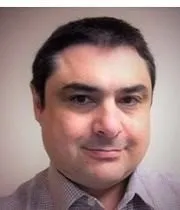
4:50pm – 5:20pm
Closing Keynote & Address: Therapeutic antibody discovery and design: evolving landscape and paradigm shifts – Partha Chowdhury, Senior Director, Protein Engineering, Janssen
Targeted Therapies
- Role of half-life extension and affinity modulation of CD3, multi-tumor targeting to address heterogeneity and antigen escape in solid tumors in the molecular design strategies for the next-generation T cell engagers?
- Risks and benefits of the current approaches to overcome immune surveillance such as T cell engagers with co-stimulatory modules (CD28, 4-1BB, OX40)?
- Will the multimodal treatment strategy within a single therapeutic agent like oncolytic virus and CAR-Ts secreting bispecific antibodies be more effective within tumor microenvironment?
Director, Antibody Engineering (Bispecifics and CAR-T)
Janssen R&D
Raj Ganesan received his Ph.D. at the University of Zurich, Switzerland. Raj is a Protein/Antibody engineer with extensive industry experience (Genentech, MedImmune and Boehringer Ingelheim) in the Design, Development and Characterization of Molecular and Cellular therapeutics. Since 2017, Raj is leading the pre-clinical discovery of biotherapeutics at Janssen R&D (Johnson and Johnson), primarily focused on bispecific antibodies (next generation T cell engagers) and CAR-T therapies.
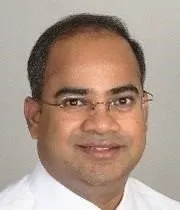
1:35pm – 2:35pm
- What are principled approaches that can be taken to guide combination therapies directed at effector cells?
- How can underlying patient heterogeneity be deconvoluted to effectively identify and precisely target immunosuppressive mechanisms operating within individual tumors?
- What is the potential for combining immunomodulatory antibodies targeting both inhibitory and co-stimulatory targets on effector cells, and what considerations need to be taken into account to most effectively combine these approaches?
- What is the role and potential for bispecific or trispecific antibodies targeting multiple effector cell targets, versus combinations of individual monospecific antibodies?
- How can other therapeutic modalities, such as vaccines, be effectively combined with monoclonal antibodies to reactivate effector cells for cancer treatment?
Senior Director, Discovery Biology & Head, Collaborations
HiFiBiO Therapeutics
Roshan Kumar is Sr. Director of Discovery Biology and Head of Collaborations at HiFiBiO Therapeutics, where his team works to identify novel immunomodulatory drug targets for the company’s internal pipeline. He previously worked to help develop the company’s single B cell screening microfluidic platform and apply it to discover antibacterial antibodies from patient samples. Roshan has more than 20 years experience in the study of complex biological systems, and received his PhD from the Scripps Research Institute and Bachelor’s degree from the California Institute of Technology. His postdoctoral studies were performed at the Whitehead Institute and Harvard Medical School.
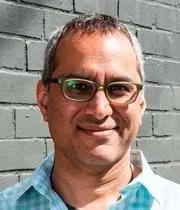
1-2-1 Meetings
- What are some of the examples for using combination of mAbs and other therapeutic modalities? Approved combinations? Combination therapies in early and late-stage clinical development?
- What are the mechanistic advantages of combination therapy?
- What are the strategies used for dose selection in combination therapy?
- What are the challenges for combination therapies?
Vice Pesident, Analytical Development
TG Therapeutics
Yune Kunes is Vice President, Analytical Development at TG Therapeutics, a biopharmaceutical company focused on the acquisition, development and commercialization of novel treatments for B-cell malignancies and autoimmune diseases. She is responsible for strategy and execution of analytical development, enabling clinical drug supply and commercialization. She is also responsible for Bioanalysis and PK/PD and ADA data, enabling non-clinical and clinical development. Previously, as Sr. Director, Director, AD, and PhD scientist at Fortress Biotech, Shire, AbbVie, and Taketa, she played significant roles in moving candidates through clinical development and into approval. Yune has devoted her career to bringing treatment options to patients in the most timely and cost-efficient manner by leveraging scientific insights on mechanisms of action, and team knowledge of technological and regulatory approaches.

4:50pm – 5:20pm
Closing Keynote & Address: Therapeutic antibody discovery and design: evolving landscape and paradigm shifts – Partha Chowdhury, Senior Director, Protein Engineering, Janssen
